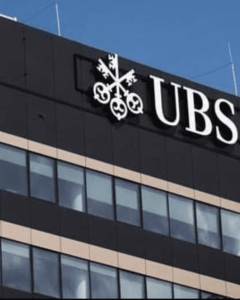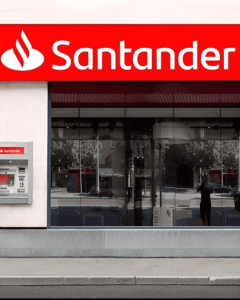Luxembourg Banks Double Profits Amid Rate Gap Surge
Discover how the ECB's interest rate policy has led to a 116% profit increase for Luxembourg banks as deposit-mortgage gaps widen.
In a striking development, the European Central Bank's (ECB) assertive interest rate policy has led to unprecedented disparities between deposit and mortgage rates in Luxembourg, resulting in a staggering 116% increase in bank profits over the past two years. This revelation comes from a recent economic publication by the Luxembourg Chamber of Employees (CSL), which highlights the profound impact of the ECB's monetary decisions on the nation's financial landscape.
The surge in bank profits can be attributed to a significant rise in interest income, as financial institutions have delayed adjusting deposit rates in response to the ECB's aggressive rate hikes. The CSL's report, released on August 20, 2023, underscores that the ECB's strategy, initiated in the wake of the post-COVID recovery and exacerbated by the ongoing conflict in Ukraine, was primarily aimed at combating soaring inflation. However, the ramifications of these rate changes have extended beyond mere price stabilization, affecting interest margins, deposit rates, and mortgage costs across the board.
Understanding the ECB's Interest Rate Mechanism
At the heart of the ECB's strategy are its three key interest rates, which serve as critical tools for regulating economic activity and inflation. The effectiveness of this approach hinges on the speed at which financial institutions relay these rate adjustments to their customers. Historically, household term deposit rates have closely mirrored the ECB's main refinancing rate—the rate at which banks borrow from the ECB for short-term liquidity. This alignment persisted for nearly two decades until a notable divergence emerged in November 2022.
As of June 2024, following a 0.25 percentage point reduction in key interest rates, the main refinancing rate stood at 4.25%, while term deposit rates lagged significantly behind at 3.3%. This growing gap between fixed-term deposit rates in Luxembourg and the ECB's refinancing rates reached its zenith in September 2023, marking the widest disparity in over two decades. Between January 2003 and October 2022, the average difference between these rates was a mere 0.29 percentage points. However, from November 2022 to June 2024, this gap widened dramatically, averaging 1.03 percentage points, a shift the CSL describes as exceptional.
Current Account Rates and the ECB's Deposit Facility Rate
The dynamics of current account rates have also shifted significantly. Before the financial crisis of 2007-2008, current account interest rates were closely aligned with the ECB's deposit facility rate, which banks utilize for overnight deposits. During this period, banks typically passed on the interest they received from the ECB to their customers. However, the low-interest environment of the 2010s saw current account rates plummet, aligning more closely with term deposit rates.
The recent uptick in key interest rates has not been reflected in current account rates to the same extent. As of June 2024, the ECB's deposit facility rate was 3.75%, while current accounts offered a mere 1.64%. This disparity has reached a two-decade high, with the average difference between January 2003 and October 2022 standing at 0.41 percentage points. In contrast, the gap surged to 2.15 percentage points between November 2022 and June 2024.
Variable-Rate Mortgages and the ECB's Marginal Lending Facility Rate
The impact of the ECB's interest rate strategy on variable-rate mortgages has been markedly different from that on deposits. Historically, from 2003 to 2012, mortgage rates closely tracked the ECB's marginal lending facility rate, which is the rate at which banks borrow overnight credit from the Eurosystem. However, since 2012, banks have not fully passed on interest rate cuts to household mortgage costs. The average gap between mortgage rates and the marginal lending facility rate was 0.31 percentage points from January 2003 to December 2011, but this increased to 1.17 percentage points between January 2012 and June 2022. During the period of negative interest rates, this difference was nearly four times higher than in previous years. In contrast, banks have been quick to pass on recent key rate increases to mortgage borrowers, reflecting a significant shift in the lending landscape.
Surge in Banks' Interest Margins
Data from the Luxembourg Central Bank (BCL) reveals that the interest margin for all credit institutions in Luxembourg has surged dramatically over the past two years. In 2023, the difference between interest income and interest expenses reached an impressive €10.7 billion, marking a 116% increase compared to the average of €5 billion recorded between 2003 and 2021. This substantial growth in interest margins underscores the financial windfall that banks have experienced amid the ECB's tightening monetary policy.
Dividends in the Banking Sector
Luxembourg's banks are not alone in reaping the benefits of this financial landscape. A report by asset manager Janus Henderson indicates that global dividend payments by companies in 2023 rose by 5.6% year-on-year, reaching a record $1.66 trillion. The banking sector played a pivotal role in this growth, with dividends increasing by over 13% year-on-year to reach $220 billion in 2023. Compared to 2021, this represents a remarkable 28.6% rise, highlighting the financial boon for shareholders in the banking industry.
While the ECB's monetary policy has been instrumental in controlling inflation, the CSL warns of its adverse effects on indebted households. The shift in interest rates and the corresponding increase in dividends distributed by banks indicate a troubling redistribution of wealth from debtors to shareholders. As banks continue to enjoy record profits, the burden of rising mortgage costs and stagnant deposit rates falls disproportionately on consumers, raising concerns about the long-term implications for household financial stability.
The aggressive interest rate strategy employed by the European Central Bank has led to significant disparities in the financial landscape of Luxembourg, resulting in record profits for banks and a widening gap between deposit and mortgage rates. As the ECB continues to navigate the complexities of inflation control, the ramifications of its policies are felt acutely by consumers, particularly those with variable-rate mortgages. The ongoing dialogue surrounding these developments underscores the need for a balanced approach that considers the interests of both financial institutions and the households they serve. As Luxembourg's banking sector thrives, the challenge remains to ensure that the benefits of this financial windfall do not come at the expense of everyday consumers.
Luxembourg Banks Double Profits Amid Rate Gap Surge
ASR Divests Knab to Bawag Group for €590 Million
ASR's strategic sale of Knab to Bawag Group marks a €590 million deal, with €100 million allocated for share repurchase to boost shareholder value.
ASR\'s strategic sale of Knab to Bawag Group marks a €590 million deal, with €100 million allocated for share repurchase to boost shareholder value.
Read moreUBS’s Asset Management Launches First Tokenized Investment Fund
UBS Asset Management has launched its inaugural tokenized investment fund, highlighting a significant trend in the evolving financial landscape.
UBS Asset Management has launched its inaugural tokenized investment fund, highlighting a significant trend in the evolving financial landscape.
Read moreSwiss National Bank Reports CHF62.5 Billion Profit
The Swiss National Bank (SNB) has generated a remarkable CHF62.5 billion profit in the first nine months of this year, reflecting robust financial performance.
The Swiss National Bank (SNB) has generated a remarkable CHF62.5 billion profit in the first nine months of this year, reflecting robust financial performance.
Read moreProfits Rise at Standard Chartered’s Wealth Arm
Standard Chartered's wealth division reports an 11% profit increase in Q3, fueled by a $1.5 billion investment to enhance services and capabilities.
Standard Chartered\'s wealth division reports an 11% profit increase in Q3, fueled by a $1.5 billion investment to enhance services and capabilities.
Read moreNatWest’s Coutts Sees Profit Surge to £90 Million
NatWest Group's Coutts reports a significant profit increase to £90M in Q3 2024, highlighting strong income growth and strategic financial management.
NatWest Group\'s Coutts reports a significant profit increase to £90M in Q3 2024, highlighting strong income growth and strategic financial management.
Read moreUBS Achieves Billion-Franc Profit, Exceeds Expectations
Swiss bank UBS reports a billion-franc profit in Q3 2024, surpassing market expectations while advancing the Credit Suisse integration efforts.
Swiss bank UBS reports a billion-franc profit in Q3 2024, surpassing market expectations while advancing the Credit Suisse integration efforts.
Read moreOnline Lending Market Declines in Switzerland
Explore the reasons behind the shrinking online lending market in Switzerland and its impact on borrowers and financial institutions.
Explore the reasons behind the shrinking online lending market in Switzerland and its impact on borrowers and financial institutions.
Read moreSantander Launches Digital Bank in the U.S.
Santander launches Openbank in the U.S. to enhance growth, focusing on deposit generation to support its auto lending strategy. Explore the details.
Santander launches Openbank in the U.S. to enhance growth, focusing on deposit generation to support its auto lending strategy. Explore the details.
Read moreAtlantic Union Bank Acquires Sandy Spring for $1.6B
Atlantic Union Bank's $1.6B deal expands its presence in the D.C. area, adding 53 branches and doubling its wealth management services.
Atlantic Union Bank\'s $1.6B deal expands its presence in the D.C. area, adding 53 branches and doubling its wealth management services.
Read more














